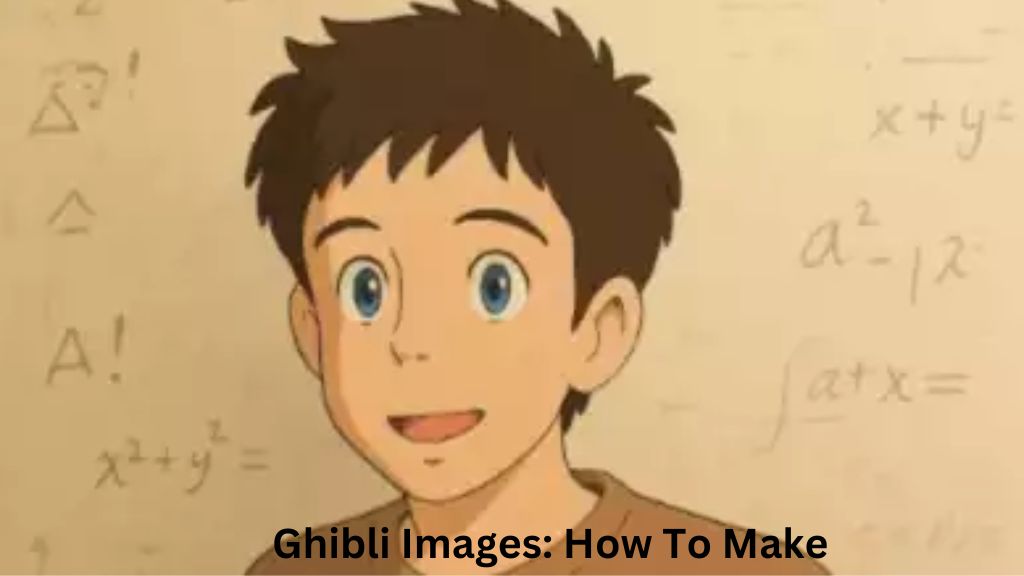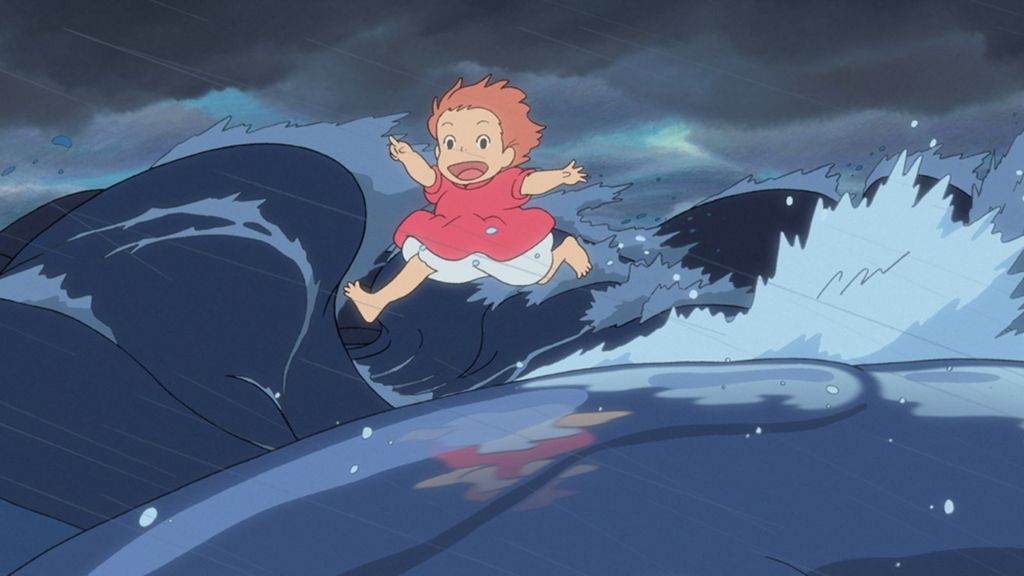How to Make Ghibli Images: A Step-by-Step Guide to Crafting Studio Ghibli-Inspired Art
Studio Ghibli films are renowned for their breathtaking visuals—lush landscapes, whimsical characters, and an almost magical attention to detail. From Spirited Away to My Neighbor Totoro, the studio’s art has inspired countless artists to recreate its iconic style.

Whether you’re a digital artist, a traditional painter, or a beginner looking to capture that Ghibli magic, this guide will walk you through the process of making Ghibli-inspired images. With over 1500 words of detailed advice, practical tips, and creative inspiration, you’ll be ready to craft your masterpieces that echo the charm of Hayao Miyazaki’s world.
Understanding the Studio Ghibli Aesthetic
Before you pick up a pencil or stylus, it’s crucial to understand what makes Ghibli’s art so distinctive. The studio’s style blends realism with fantasy, emphasizing natural beauty, vibrant colors, and emotional storytelling.

Backgrounds often feature sprawling forests, cozy villages, or serene skies, while characters exude personality through subtle expressions and dynamic poses. To create Ghibli-inspired images, immerse yourself in their films—notice the soft lighting, intricate textures, and the way every frame feels alive.
Start by watching classics like Princess Mononoke or Howl’s Moving Castle. Pay attention to recurring themes: the harmony between humans and nature, the use of muted yet vivid palettes, and the delicate balance of simplicity and detail. This foundation will guide your creative process.
Gathering the Right Tools
Your toolkit depends on whether you’re working traditionally or digitally. For traditional art, you’ll need:
- Pencils and erasers: For sketching outlines and refining details.
- Watercolors or gouache: Ghibli backgrounds often mimic the soft, translucent quality of watercolor.
- Fine-tip pens: Perfect for adding intricate line work to characters or foliage.
- High-quality paper: Opt for watercolor paper or a sketchbook with good texture.
For digital artists, consider:
- Drawing tablet: Brands like Wacom or Huion work well.
- Software: Photoshop, Procreate, or Clip Studio Paint are popular choices.
- Brushes: Look for watercolor and ink brush packs to replicate Ghibli’s hand-painted look.
Experiment with your tools to find what feels natural—Ghibli’s charm lies in its organic, handmade quality.
Mastering Ghibli-Style Backgrounds
The backdrop is the heart of any Ghibli image. These scenes often steal the show with their depth and tranquility. Here’s how to create one:
- Choose a Setting: Think of a forest with dappled sunlight, a wind-swept field, or a quaint village nestled in hills. Nature is a Ghibli staple.
- Layer Your Composition: Start with the sky—soft blues or warm oranges fading into each other. Add distant mountains or trees, then foreground elements like grass or a winding path.
- Focus on Lighting: Ghibli uses light to evoke mood. A golden sunrise or a misty dawn can transform your scene. Blend colors gently to avoid harsh contrasts.
- Add Details: Scatter wildflowers, rustling leaves, or a hidden stream. These small touches make the world feel lived-in.
For example, imagine a meadow at dusk: the sky glows pink and purple, tall grasses sway in the breeze, and fireflies begin to flicker. This kind of scene instantly recalls Grave of the Fireflies or The Secret World of Arrietty.
Designing Ghibli-Inspired Characters
Characters in Ghibli films are deceptively simple yet full of life. To design your own:
- Start with Shapes: Use basic forms—ovals for heads, cylinders for limbs—to build a proportional figure.
- Clothing Matters: Flowing dresses, oversized hats, or practical workwear reflect personality. Study Chihiro’s simple outfit in Spirited Away or Totoro’s round, fuzzy form.
- Expressive Faces: Keep features minimal—small eyes, a subtle mouth—but exaggerate expressions for emotion. A raised eyebrow or a shy smile can say it all.
- Pose Dynamically: Characters rarely stand still. Show them leaning into the wind, holding a basket, or peering curiously at something off-screen.
Pair your character with the background. A girl in a red dress skipping through that dusk-lit meadow ties the image together.
Perfecting the Color Palette
Ghibli’s colors are vibrant yet harmonious. To nail this:
- Use Nature as Inspiration: Earthy greens, sky blues, and sunset oranges dominate their palette.
- Soften with Neutrals: Mute bright tones with grays or browns for that gentle, nostalgic feel.
- Avoid Over-Saturation: Too much intensity breaks the dreamlike quality. Blend colors smoothly, especially in skies or water.
Test your palette by painting a small swatch. If it feels calming yet vivid—like a still from Kiki’s Delivery Service—you’re on the right track.
Adding Texture and Detail
Texture brings Ghibli images to life. In traditional art, layer watercolor washes for depth, then use pens to outline blades of grass or roof tiles. Digitally, experiment with textured brushes—think stippling for tree bark or soft strokes for clouds.
Don’t overdo it. Ghibli balances detail with simplicity—every leaf doesn’t need to be drawn, but a few well-placed ones suggest a forest. Study Castle in the Sky for inspiration: the crumbling ruins are detailed, yet the overall image remains uncluttered.
Incorporating Storytelling Elements
Every Ghibli image tells a story. Ask yourself: What’s happening here? Is your character on a journey, resting after an adventure, or meeting a magical creature? Subtle hints—like a lantern glowing in the dark or a trail of footprints—invite viewers to imagine the narrative.
For instance, add a tiny spirit perched on a branch in your meadow scene. It’s a nod to Totoro and sparks curiosity without overpowering the composition.
Polishing Your Work
Once your image is complete, refine it:
- Check Proportions: Ensure characters fit naturally into the background.
- Adjust Contrast: Enhance lighting to guide the viewer’s eye.
- Simplify if Needed: Remove excess details that distract from the focal point.
Step back and view your work as a whole. Does it evoke the warmth and wonder of a Ghibli film? If so, you’ve succeeded.
Practice and Inspiration Tips
Creating Ghibli-style art takes time. Practice by recreating scenes from films—try Kiki flying over her town or the bathhouse from Spirited Away. Then, branch out with original ideas. Follow artists on platforms like Instagram or Pinterest who emulate this style, and keep a sketchbook for daily doodles.

Showcasing Your Ghibli Art
Share your work online—Instagram, DeviantArt, or X are great platforms. Use hashtags like #StudioGhibliArt or #GhibliInspired to reach fans. If you’d like, print your designs on Etsy as posters or stickers—Ghibli’s timeless appeal makes it a hit with collectors.
FAQs About Making Ghibli Images
- What defines the Studio Ghibli art style?
It’s a mix of realistic nature, vibrant yet soft colors, and expressive characters with a hand-painted, whimsical feel. - Do I need to be good at drawing to start?
No! Start with simple shapes and practice. Ghibli’s charm comes from effort, not perfection. - Which software is best for digital Ghibli art?
Procreate and Clip Studio Paint are favorites for their watercolor brushes and layering options. - Can I use acrylics instead of watercolor?
Yes, but thin them with water for a softer, Ghibli-like effect. - How do I make my backgrounds look alive?
Add small details like birds, rustling leaves, or shifting light to create movement. - What’s the hardest part of Ghibli-style art?
Balancing detail and simplicity—too much clutter can ruin the serene vibe. - How long does it take to create a Ghibli image?
A detailed piece might take 5-10 hours, but simpler sketches can be done in 1-2 hours. - Can I sell my Ghibli-inspired art?
Yes, as long as it’s original and not a direct copy of copyrighted frames. - How do I pick a color palette?
Study nature or Ghibli stills—aim for earthy tones with pops of color like red or yellow. - Where can I find inspiration?
Watch Ghibli films, explore fan art online, or take a walk in nature to spark ideas.
Final Thoughts
Crafting Ghibli-inspired images is a journey into a world of wonder and creativity. By blending lush backgrounds, lively characters, and a touch of storytelling, you can create art that resonates with the spirit of Studio Ghibli.
Whether you’re sketching Totoro-like creatures or painting a forest bathed in golden light, the key is to enjoy the process. Start small, experiment often, and let your imagination soar—soon, you’ll have your collection of Ghibli masterpieces.
